An Icy Encounter With a Melting Glacier
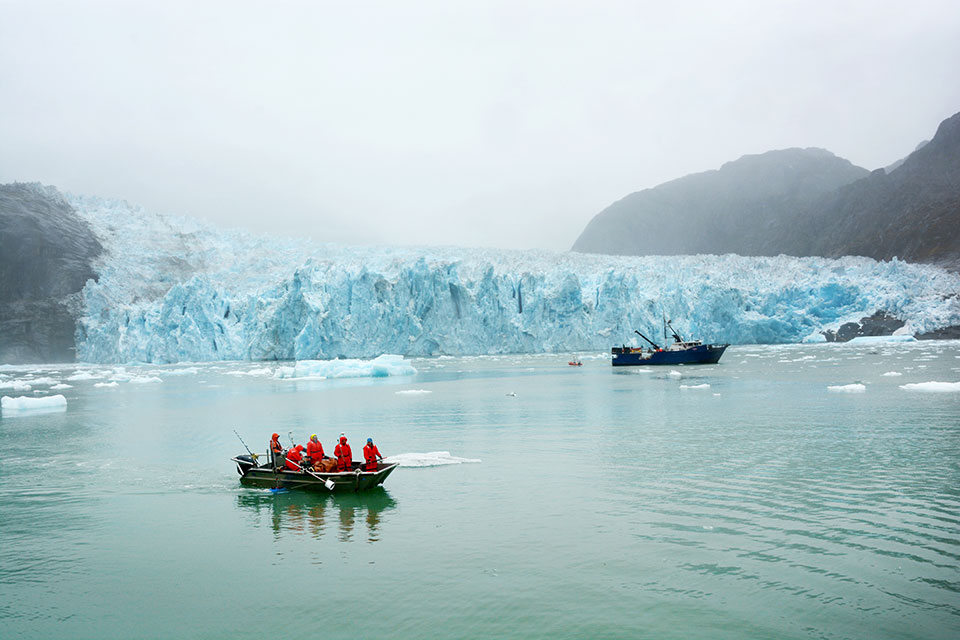
By David Levin
Photography courtesy of Sally Warner and Jasmine Nahorniak
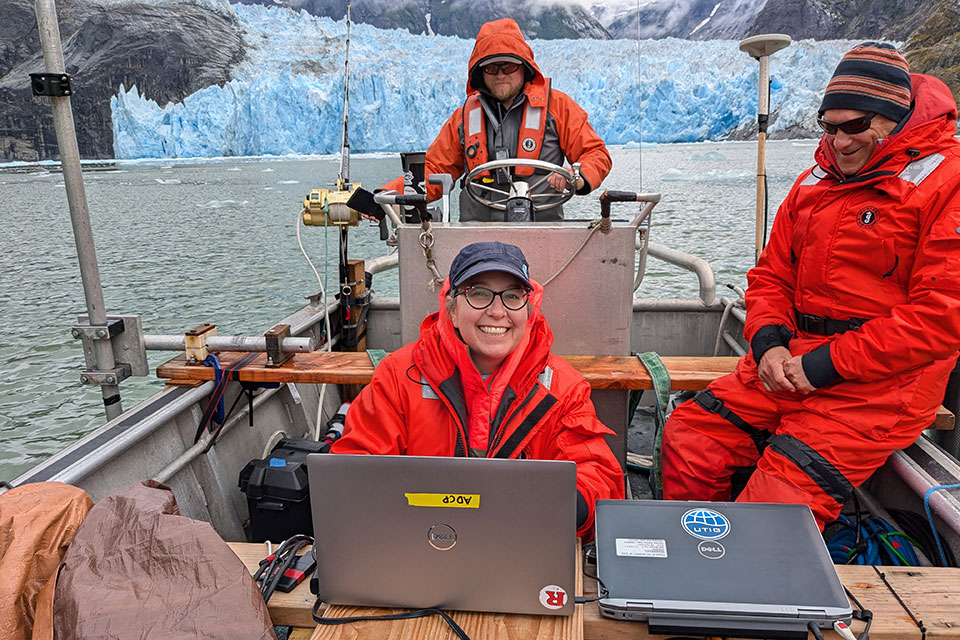
Oceanographer Sally Warner
2024 is on track to be one of the warmest years, if not the warmest, in recorded history. That’s bad news for the world’s glaciers. Rising temperatures in the atmosphere and the oceans are causing many glaciers to melt much faster than usual, releasing their vast stores of water into the ocean and raising global sea levels.
Knowing exactly how glaciers melt — and how fast they’re disappearing — is critical to understanding the impact of climate change, says oceanographer Sally Warner, an associate professor of climate science. But gathering data from the leading edge of a glacier — aka its calving front — isn’t easy. Massive chunks of ice the size of small buildings can break off and crash into the ocean without warning, obliterating anything in their path.
In July, Warner traveled to LeConte Glacier in southeastern Alaska, where she joined scientists from Rutgers University and Oregon State University to study its calving front.
To maintain a safe distance, the researchers set up a base of operations on the R/V Steadfast, a 108-foot research ship that cruised the waters 500 meters away from LeConte Glacier. Several small crewed boats patrolled closer to the glacier, and uncrewed autonomous robotic vehicles were used to bring instruments directly up to the edge of the ice.
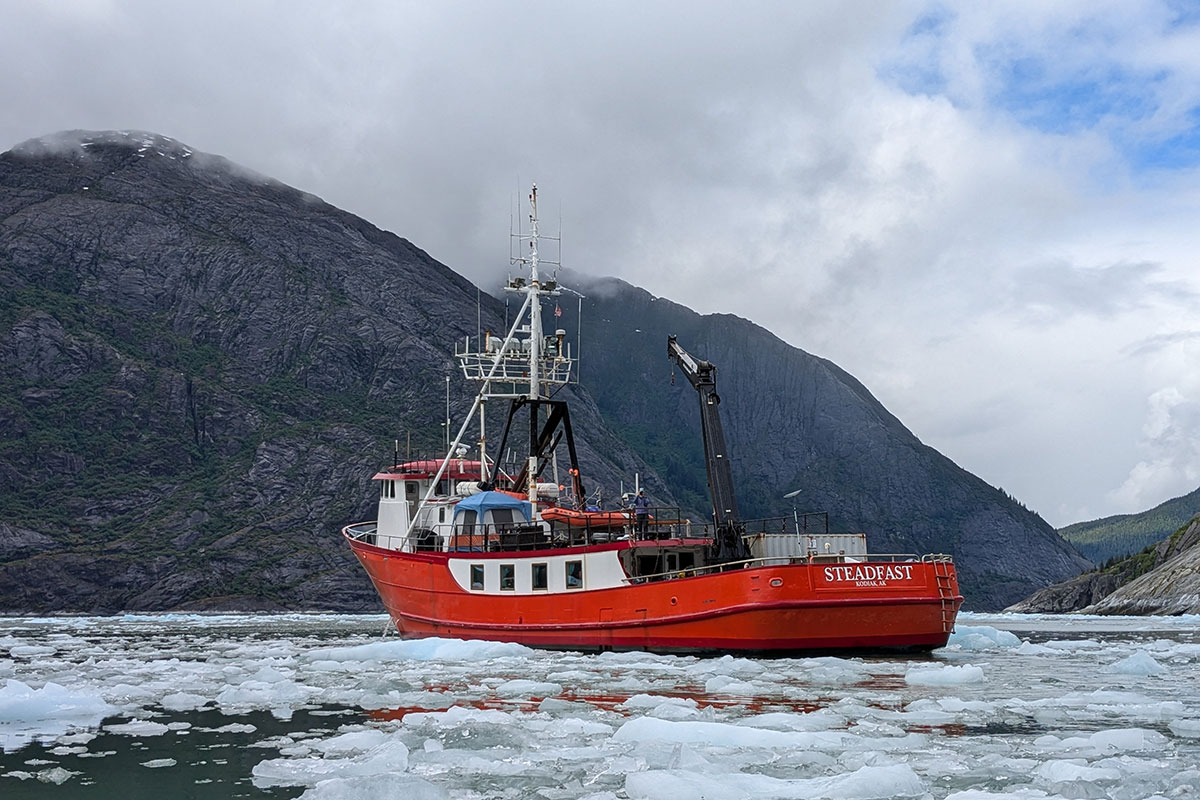
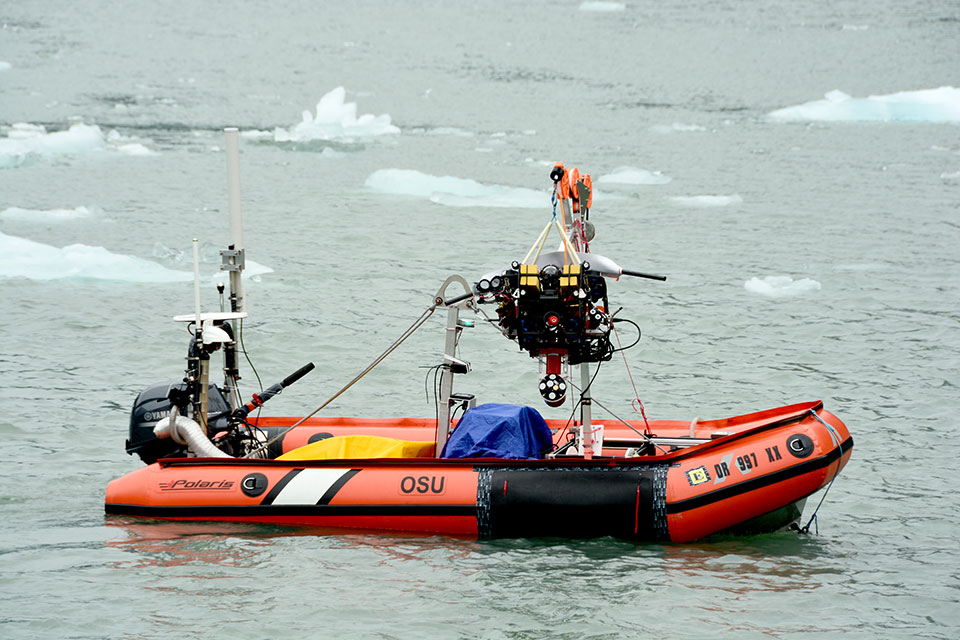
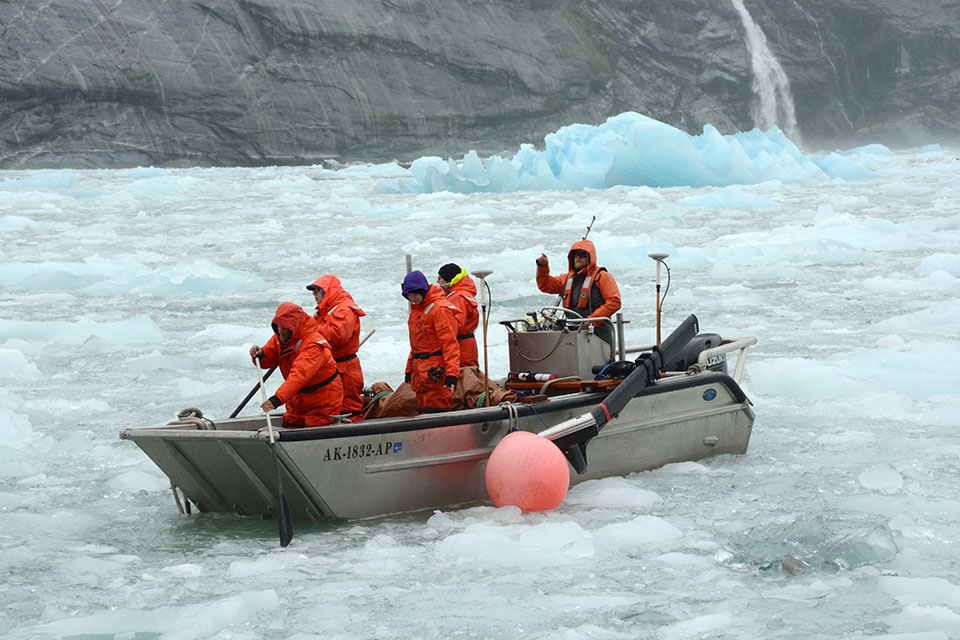
Using information collected by these devices, Warner and her colleagues mapped some of the turbulent currents that LeConte creates in seawater.
As glaciers flow down from their mountainous origins, their ice begins to melt, and liquid water seeps down beneath them. Eventually, this meltwater is released into the surrounding ocean. Since fresh water is less dense than saltwater, the runoff immediately rises to the surface, causing swirling, churning currents that eat away at the submerged face of the glacier.
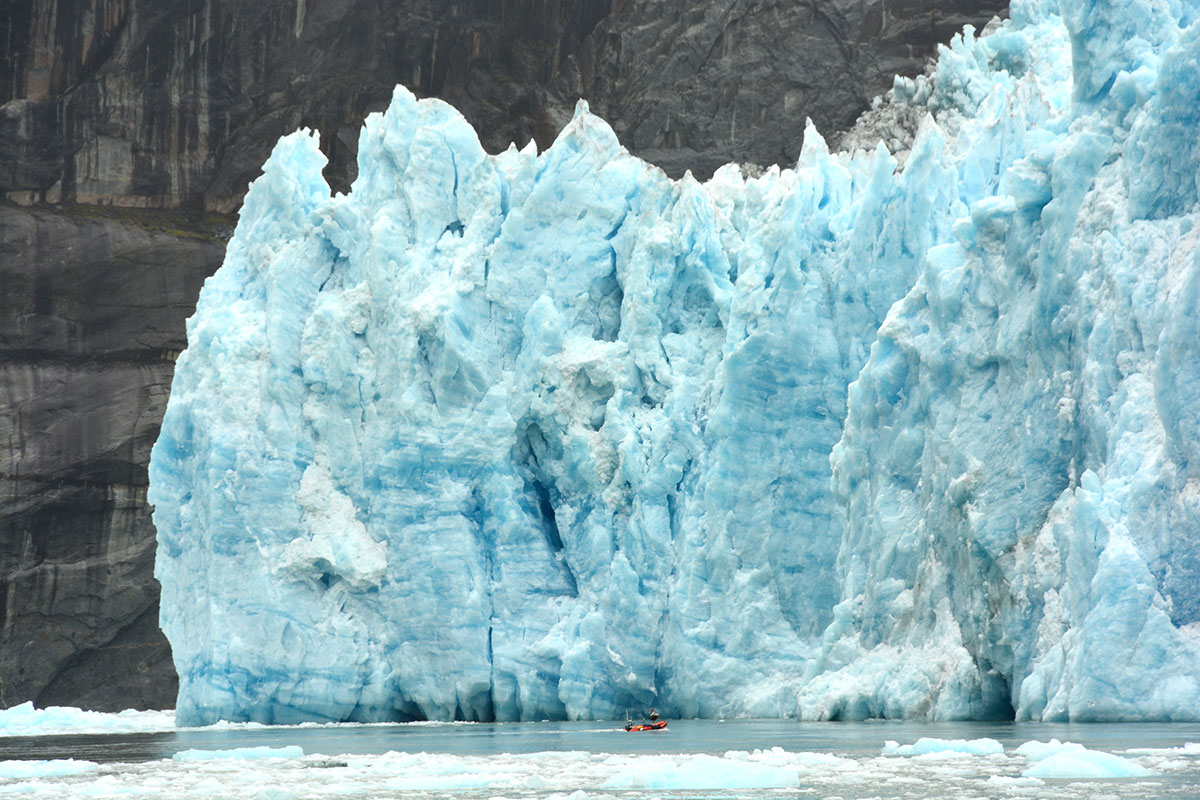
“If you’re looking from above, it looks almost like the water is boiling, because that fresh meltwater is rising to the surface so quickly,” says Warner. “We want to understand how fast the water is coming up and how much turbulence it’s creating, which will help us understand how quickly the glacier is melting.”
To better understand the turbulent currents, Warner and her colleagues recorded the water temperature and salinity around the glacier, measured changes in currents at different depths, and created sonar maps of the ice face below the surface. Other scientists on the expedition remotely attached probes to the vertical wall of ice to gather intricate details on how the glacier’s face is melting underwater. The team also used aerial drones to map and measure surface melting and calving events.
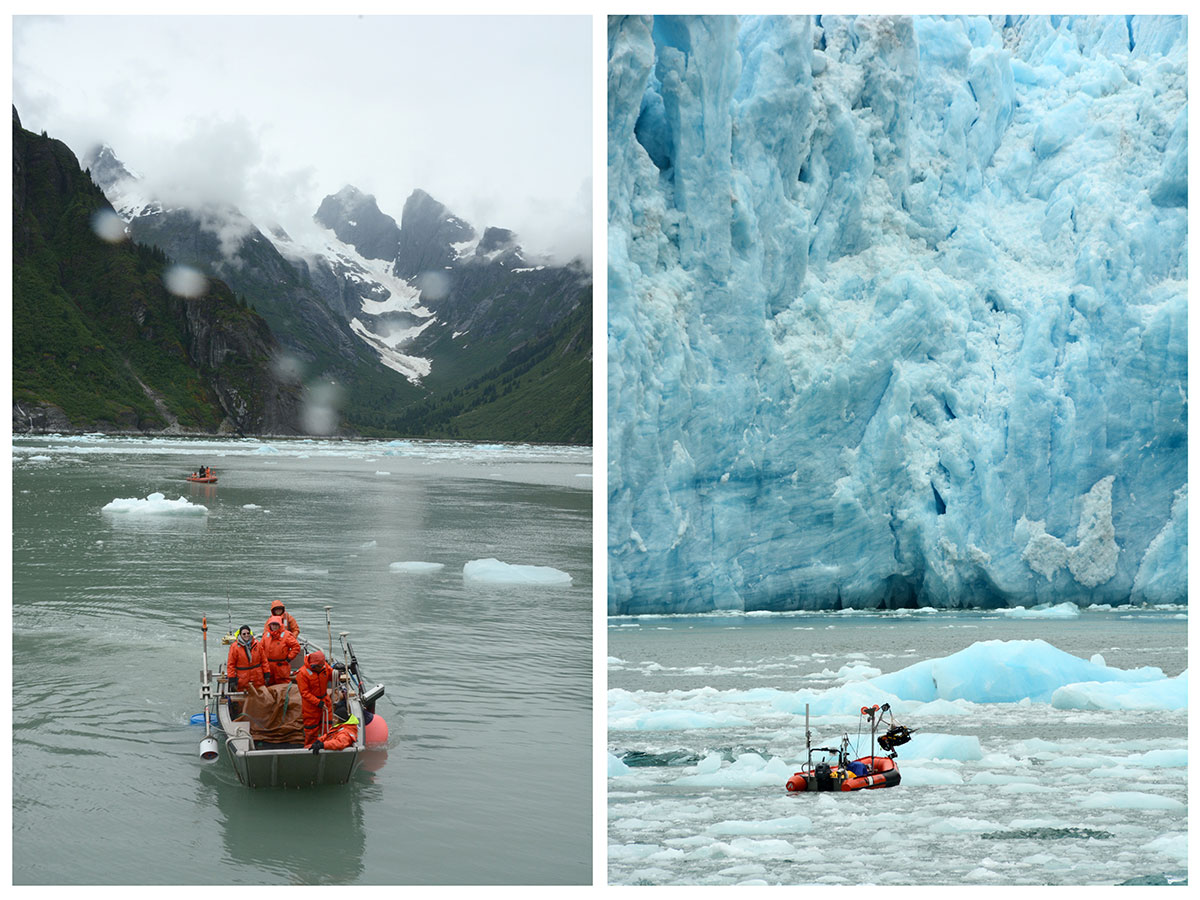
The information Warner and the rest of the research team collected over the span of a week and a half may have an impact for years to come, helping scientists understand precisely how climate change is affecting glaciers and how melting glaciers, in turn, affect sea-level rise.
Warner also hopes the fieldwork will help a new generation of researchers learn the ropes. “Ultimately, I’d love to use the data from the cruise to create a hands-on activity for students,” she says. “If they had, say, a map of turbulence along the glacier face, could they point out where the most melting is happening? If they compare that with another map of water temperature and salinity along the front of the glacier, could they show where they expect the ice to melt the most?
“It’s like a fantastic mystery treasure hunt.”